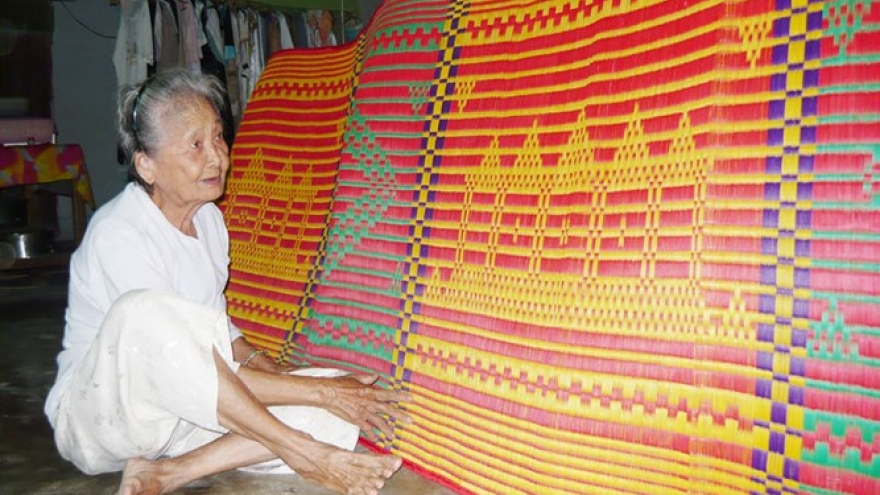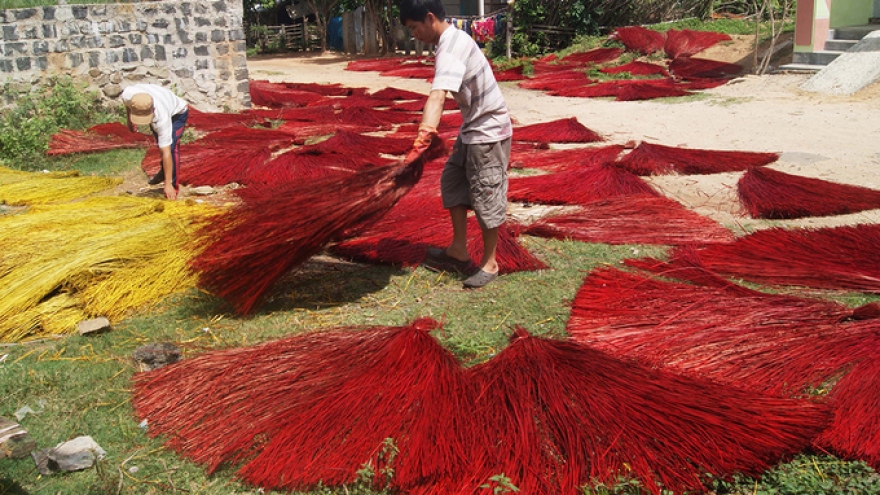Dong Xam silver craft village preserves tradition
VOV.VN - Dong Xam village in Thai Binh province is one of three places well-known for the silver carving craft, together with Hang Bac Street and Dinh Cong village in Hanoi. Also known as Duong Tham, the 600-year old village is now located in Hong Thai commune, Kien Xuong district.
 |
| Dong Xam village rises in fame due to its bronze carving products (Photo: Lam Khanh/VNA) |
At first, villagers welded bronze items such as moulded buckets or basins, sharpened knives or scissors, and repaired locks. The locals then progressed into the art of silver and bronze carvings.
The village’s heyday was when Dong Xam artisans brought the craft to the nation as a whole. During the Nguyen dynasty in the 19th and early 20th century, they went to the ancient capital of Hue to carve the imperial palace and to craft jewelry for the royal court. The Dong Xam artisans, in conjunction with silversmiths in Chau Khe village in Hai Duong province, and Dinh Cong village in Hanoi, were the founders of the famous Hang Bac Silver Street in Hanoi. There are approximately 150 silver carving workshops in Dong Xam village currently, employing 4,000 workers and generating around US$4.3 million a year.
Hoang Van Cuong, a villager, recalls, “Our village is over 600 years old. In the past, villagers often carved silver products to sell for mandarins and foreign merchants. The village produces a diverse range of items, including jewelry, objects of worship, and souvenirs. Today we have retailers throughout the country, especially in Hanoi, Hue, Da Nang, and Ho Chi Minh City. The village mainly manufactures to orders, for exports, or diplomatic gift purposes.”
Silver carving requires one to be meticulous and accurate, while the crafts people need a high degree of qualification. Dong Xam’s unique silver products are characterized by strange aesthetic styles, such as cube like appearance as well as sophisticated and well-proportioned decorations, requiring a delicate touch and well honed skills.
Artisan Le Thanh says, “There are 10 different stages to carve a silver product. But the main stages are to cut materials, weld details into blocks, and carve patterns. Carving is the most difficult of the techniques. The most sophisticated characteristic is embossed motifs with hand-made patterns. Other craft villages can also make embossed patterns, however they prefer to make them with prefabricated moulds instead of using skilled manual techniques as we do.”
 |
| The patterns of dragons, phoenixes are sophisticatedly carved on a silver products (Photo: Lam Khanh/VNA) |
Artisan Le Thanh explains how popular their works are “To carve gold, silver, or bronze materials is of the same level of difficulty. But Dong Xam artisans can work on all types of materials and still ensure aesthetically pleasing results. On the 1,000th anniversary of Thang Long - Hanoi, Dong Xam village made two great works - Doan Mon or the main gate in the south leading to the Imperial Citadel of Thang Long, and King Ly Cong Uan who moved Vietnam’s capital from Ninh Binh province to Thang Long now Hanoi. I myself had a work called "One Pillar Pagoda Lotus" which was used as a diplomatic gift during Party leader Nguyen Phu Trong’s visit to Myanmar.”
Thanks to the craft, Dong Xam villagers’ living conditions have improved. To remember the progenitor Kim Lau’s contributions to the village, Dong Xam Temple was built. The Dong Xam Temple Festival is held annually from the 1st to 5th day of the 4th lunar month.



